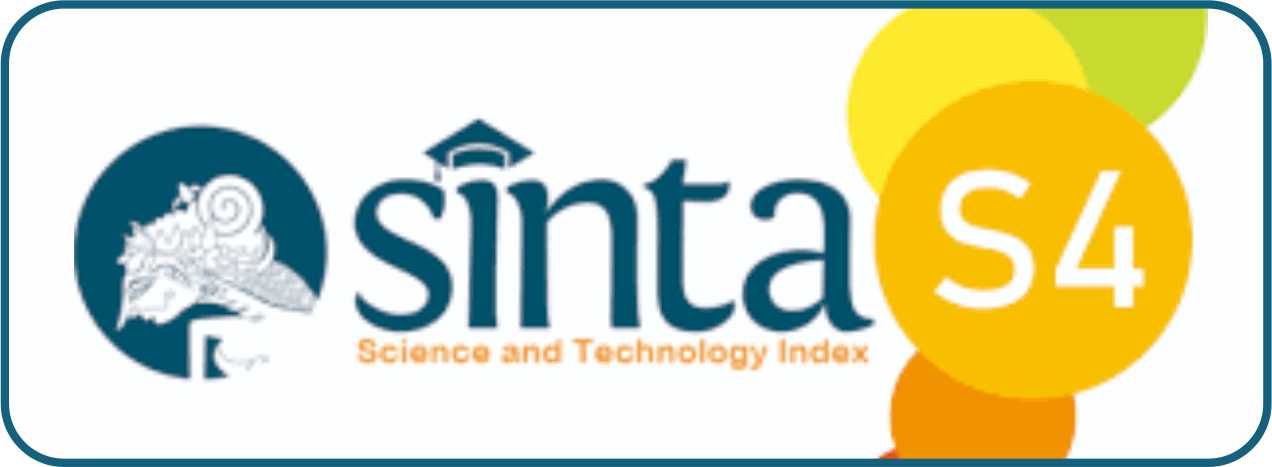Classification of Device Addiction to Students Using SAS-SV with K-Nearest Neighbor Algorithm Method
Abstract
Keywords
Full Text:
PDFReferences
Oktavia, N., dan Mulabbiyah, M. (2019). Gawai dan kompetensi sikap sosial siswa MI (studi kasus pada siswa kelas V MIN 2 kota Mataram). El Midad, 11(1), 19-40.
Abdi, S., dan Karneli, Y. (2020). Kecanduan game online: penanganannya dalam konseling individual. Guidance, 17(2), 9-20.
Widya, R. (2020). Dampak negatif kecanduan gadget terhadap perilaku anak usia dini dan penanganannya di paud Ummul Habibah. Jurnal Abdi Ilmu, 13(1), 29-34.
Sahambangung, J. R., Munir, R., dan Sanger, J. B. (2018). Sistem klasifikasi pengguna narkoba menggunakan metode k-nearest neighbor. Jurnal Ilmiah Realtech, 14(2), 169-179.
Sisbintari, K. D., dan Setiawati, F. A. (2021). Digital parenting sebagai upaya mencegah kecanduan gadget pada anak usia dini saat pandemi COVID-19. Jurnal Obsesi: Jurnal Pendidikan Anak Usia Dini, 6(3), 1562-1575.
Hasanah, U., Hijrianti, U. R., dan Iswinarti, I. (2020). Pengaruh smartphone addiction terhadap perilaku agresif pada remaja. Proyeksi: Jurnal Psikologi, 15(2), 182-191.
Putra, A. D. A., dan Juanita, S. (2021). Analisis sentimen pada ulasan pengguna aplikasi bibit dan bareksa dengan algoritma KNN. JATISI (Jurnal Teknik Informatika dan Sistem Informasi), 8(2), 636-646.
Naufal, M. F., Kusuma, S. F., Tanus, K. C., Sukiwun, R. V., Kristiano, J., dan Lieyanto, J. O. (2021). Analisis perbandingan algoritma klasifikasi citra chest x-ray untuk deteksi COVID-19. Teknika, 10(2), 96-103.
Angreni, I. A., Adisasmita, S. A., Ramli, M. I., dan Hamid, S. (2018). Pengaruh nilai k pada metode k-nearest neighbor (KNN) terhadap tingkat akurasi identifikasi kerusakan jalan. Rekayasa Sipil, 7(2), 63-70.
Arthy, C. C., Effendy, E., Amin, M. M., Loebis, B., Camellia, V., and Husada, M. S. (2019). Indonesian version of addiction rating scale of smartphone usage adapted from smartphone addiction scale-short version (SAS-SV) in junior high school. Open Access Macedonian Journal of Medical Sciences, 7(19), 3235-3239.
Nikmatun, I. A., dan Waspada, I. (2019). Implementasi data mining untuk klasifikasi masa studi mahasiswa menggunakan algoritma k-nearest neighbor. Simetris: Jurnal Teknik Mesin, Elektro dan Ilmu Komputer, 10(2), 421-432.
Iskandar, J. W., dan Nataliani, Y. (2021). Perbandingan naïve bayes, SVM, dan K-NN untuk analisis sentimen gadget berbasis aspek. Jurnal RESTI (Rekayasa Sistem dan Teknologi Informasi), 5(6), 1120-1126.
Naufal, M. F. (2021). Analisis perbandingan algoritma SVM, KNN, dan CNN untuk klasifikasi citra cuaca. Jurnal Teknologi Informasi dan Ilmu Komputer, 8(2), 311-317.
Purnomo, D. (2017). Model prototyping pada pengembangan sistem informasi. JIMP (Jurnal Informatika Merdeka Pasuruan), 2(2), 54-61.
Putra, A. D. A., dan Juanita, S. (2021). Analisis sentimen pada ulasan pengguna aplikasi bibit dan bareksa dengan algoritma KNN. JATISI (Jurnal Teknik Informatika dan Sistem Informasi), 8(2), 636-646.
Zaky, U., Prasetyoaji, A., dan Fathullah, I. (2020). Klasifikasi menggunakan metode naïve bayes: tingkat pengaruh penggunaan gadget terhadap kematangan kecerdasan emosi mahasiswa. JUSIFO (Jurnal Sistem Informasi), 6(2), 101-110.
Halim, A. A. D., dan Anraeni, S. (2021). Analisis klasifikasi dataset citra penyakit pneumonia menggunakan metode k-nearest neighbor (KNN). Indonesian Journal of Data and Science, 2(1), 01-12.
Nasution, M. R. A., dan Hayaty, M. (2019). Perbandingan akurasi dan waktu proses algoritma K-NN dan SVM dalam analisis sentimen twitter. Jurnal Informatika, 6(2), 226-235.
Sahar, S. (2020). Analisis perbandingan metode k-nearest neighbor dan naïve bayes clasiffier pada dataset penderita penyakit jantung. Indonesian Journal of Data and Science, 1(3), 79-86.
Baita, A., Pristyanto, Y., dan Cahyono, N. (2021). Analisis sentimen mengenai vaksin sinovac menggunakan algoritma support vector machine (SVM) dan k-nearest neighbor (KNN). Information System Journal, 4(2), 42-46.
DOI: https://doi.org/10.17509/coelite.v1i1.51616
Refbacks
- There are currently no refbacks.
Journal of Computer Engineering, Electronics and Information Technology (COELITE)
is published by UNIVERSITAS PENDIDIKAN INDONESIA (UPI),
and managed by Department of Computer Enginering.
Jl. Dr. Setiabudi No.229, Kota Bandung, Indonesia - 40154
email: coelite@upi.edu
e-ISSN: 2829-4149
p-ISSN: 2829-4157




